Iona beach, near the Vancouver International Airport in Richmond, BC, is fantastic place to go looking for spiders and other arthropods, and there always seems to be something new to discover on the dunes. So it was an unusual situation when last Friday evening, just before the park gates were about to close, Sean was lamenting not having found anything very interesting to photograph. We decided to spend our last minutes on the beach in an effort to turn up some sleeping hymenopterans in the vegetation bordering a walking path. After closely inspecting a couple of plants, instead of a sleeping bee or wasp, I found what at first glance looked like a tiny twig hanging in the middle of a spider’s orb web. Meet Tetragnatha caudata, the longest, most cryptic orb-weaver I have ever met!
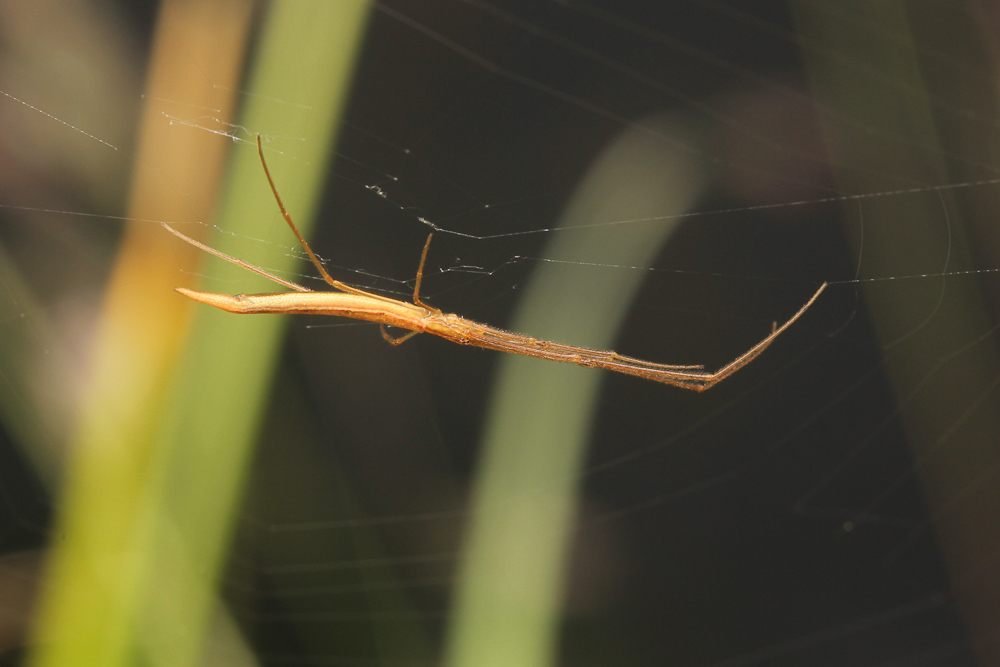
This slender female was not easy to spot among the grasses, even though she was hanging right in the middle of her web. Her body is only about 1cm long from tip to tail.
Tetragnathidae is the family of the longjawed orb-weavers. You can see where the name comes from in the photo of a male below. During mating, the male and female interlock their large chelicerae in toothy embrace. This is where the male’s exceptionally long pedipalps come in handy, allowing him to reach the female’s epigynum while maintaining his hold on his partner’s fangs.
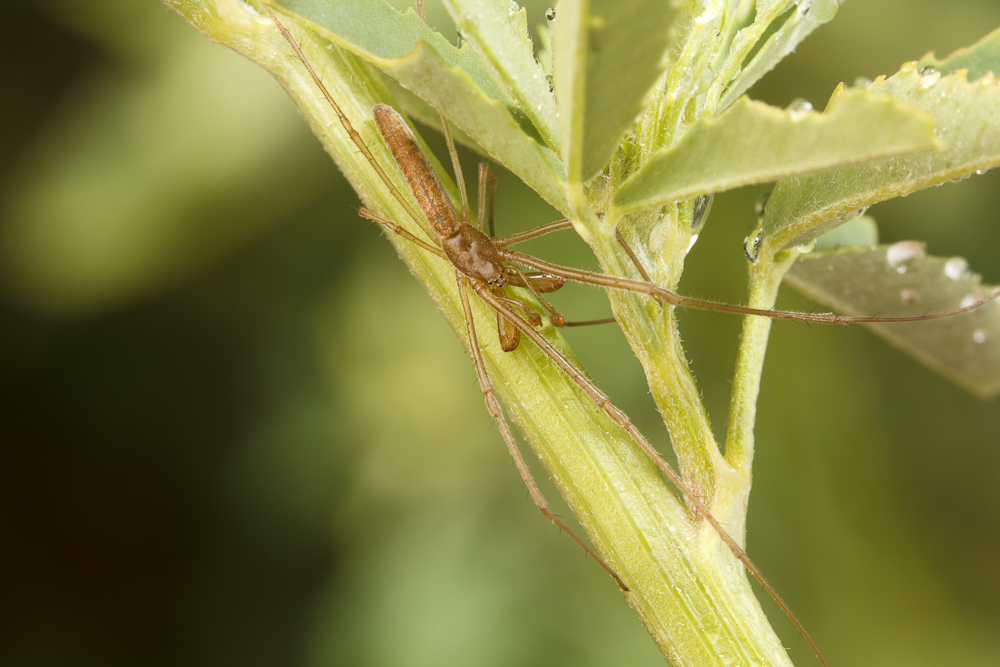
You can see this male’s large, powerful jaws sticking out to the sides underneath his very long, slender pedipalps.
Spiders in the genus Tetragnatha are sometimes called ‘stretch spiders’ because of their elongated bodies. They often rest with their first two pairs of legs stretched out in front. They can be very cryptic in this posture, especially if they cling to twigs or stems that are similar in colour to their bodies. Although they normally use their webs for hunting, sometime Tetragnatha will also snap up unsuspecting prey when lying low like this on vegetation.
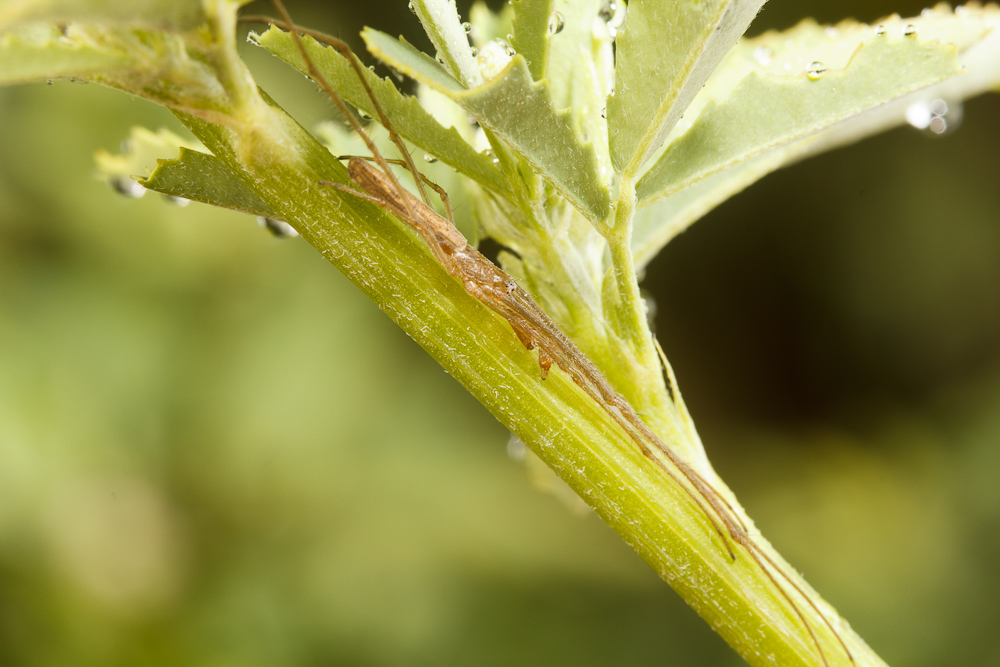
A male Tetragnatha in camouflage mode. This works better on dry grasses or twigs, I would think. But still pretty stealthy here.
Most species in the genus Tetragnatha are difficult to tell apart, but I got lucky with this one (it keys out in the second couplet of the key to the Canadian species in this genus). Tetragnatha caudata is so named because of its strange looking abdomen (caudata means ‘tailed’ in Latin). While I would expect the spinnerets to sit at the tip of a spider’s abdomen, in this species there is a slight kink where the spinnerets sit on the underside of the abdomen, and a pointy tail sticks out behind them.
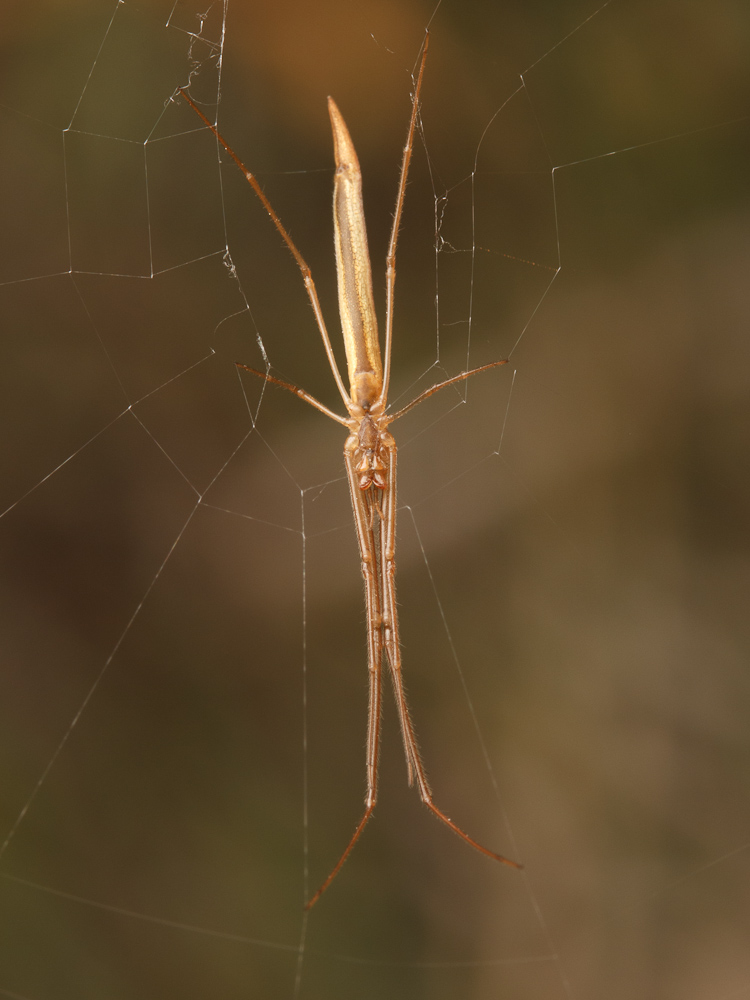
If you look closely you can see a strand of silk coming out of this female’s spinnerets, located on the underside of her abdomen just before it bends into a pointy tail.
The orb webs of Tetragnatha are usually horizontal or angled (unlike the vertical webs of spiders in the more familiar orbweaver family Araneidae) and have a hole in the centre where the spider sits waiting for prey.
We found several of these tiny Tetragnatha caudata among tall grasses, but larger members of the genus typically build their horizontal orbwebs over water, allowing them to capture insects such as mosquitoes as they emerge.
So let this be a lesson: next time you’re out looking for wildlife, stop and take a careful look in some seemingly boring vegetation! You never know what wonders you might turn up.
Thanks to Sean, as usual, for the great photos!
References:
Adams, R.J. (2014) Field Guide to the Spiders of California and the Pacific Coast States. University of California Press, Berkeley and Los Angeles.
Bradley, R. (2013) Common Spiders of North America. University of California Press, University of California Press, Berkeley and Los Angeles.
Dondale, C. D., Redner, J. H., Paquin, P., & Levi, H. W. (2003). The Insects and Arachnids of Canada. Part 23. The Orb-weaving Spiders of Canada and Alaska (Araneae: Uloboridae, Tetragnathidae, Araneidae, Theridiosomatidae). Ottawa, NRC Research Press.
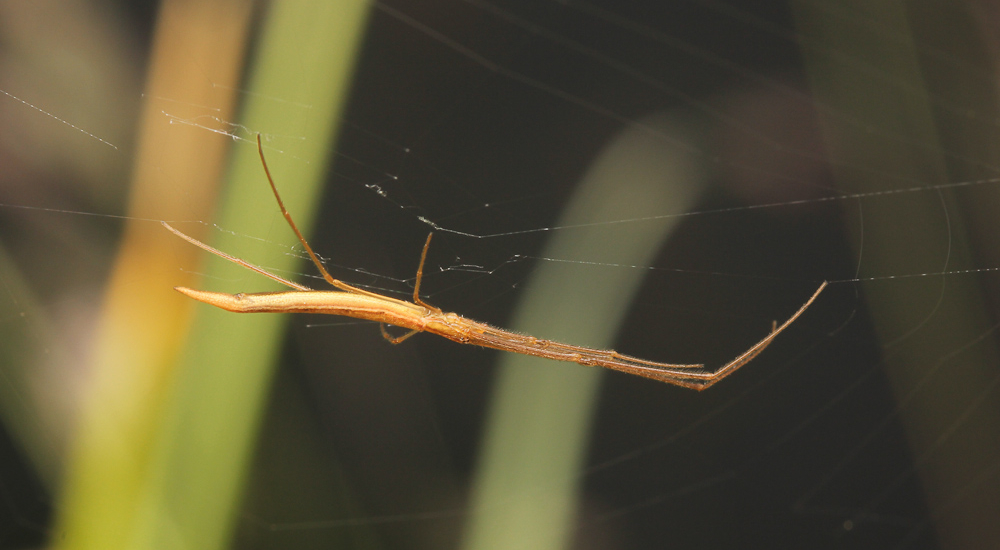
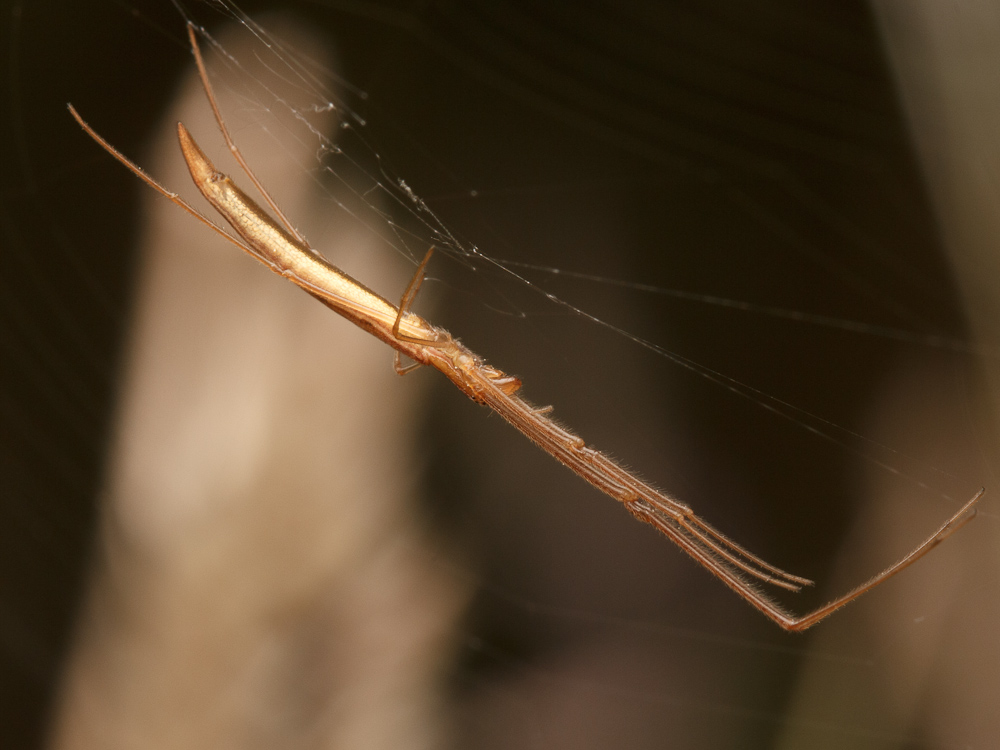
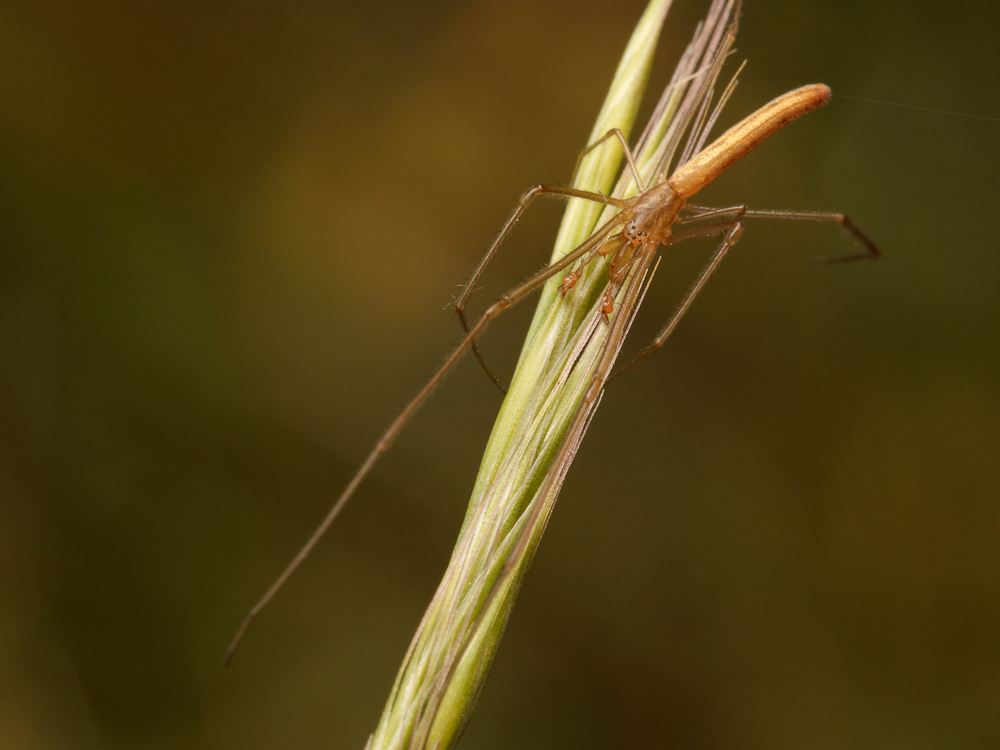
Pingback: Tetragnatha revisited: dinner and romance at sunset | spiderbytesdotorg
Pingback: Catchup on images from the past week. | Ibycter
Hi! Awesome blog here! I umm, I don’t have such a good lens as your camera, but I enjoy photographing insects and spiders! But the point of this reply is that over this summer I found a spider that acted very similar to this spider here. The one I found camouflages himself by making his body as skinny as possible blending into a twig, OR EVEN his own prey’s carcasses, it’s pretty awesome! This guy has lived in a bush out front of my house all summer….even checked a week ago and he was STILL THERE! This time, though with what look like a bunch of eggs (so I should probably say HER) in the same basic shape as her camouflage position.
Now, since last week we have had a storm and the web got kind of destroyed, and it seems now the momma has probably died (since now it’s just what looks like a line of eggs hanging from a string, from before what was a full web)….and I’m thinking like, would it be worth it to put the eggs in a small aquarium inside during the winter and wait until they hatch next spring and put them back out there….or would that possibly mess up the natural birth cycle….or are they going to hatch DURING winter lol.
My next step was to just find out what spider I had out there then I would be able to answer this question….but the closest I seem to come is this one, the Tetragnatha Caudata. I was thinking if you think you are able to identify this guy (using my many, mostly shitty, photographs) ….or provide any advice, maybe I could decide what I wanna do with the eggs, because it’s a really interesting spider that I have never seen before.
Anyways, thanks for reading! woooo
Thanks for commenting! I’d be happy to take a look at your photos – please send me an email at catherine.scott [at] mail.utoronto.ca
Hey Catherine,
Thank you for putting up this post. A few friends and I, were chilling under a single hanging lamp during late evening and we noticed a long slender insect at the lamp pacing back and forth on the shade. On getting closer did we realize it was a slender spider and that was the first time I’d ever seen something so weirdly beautiful! Of course we couldn’t identify it until the next day, thanks to your blog 🙂